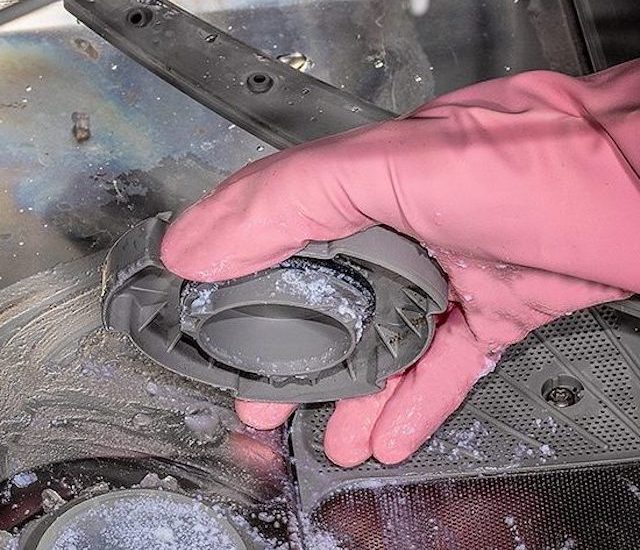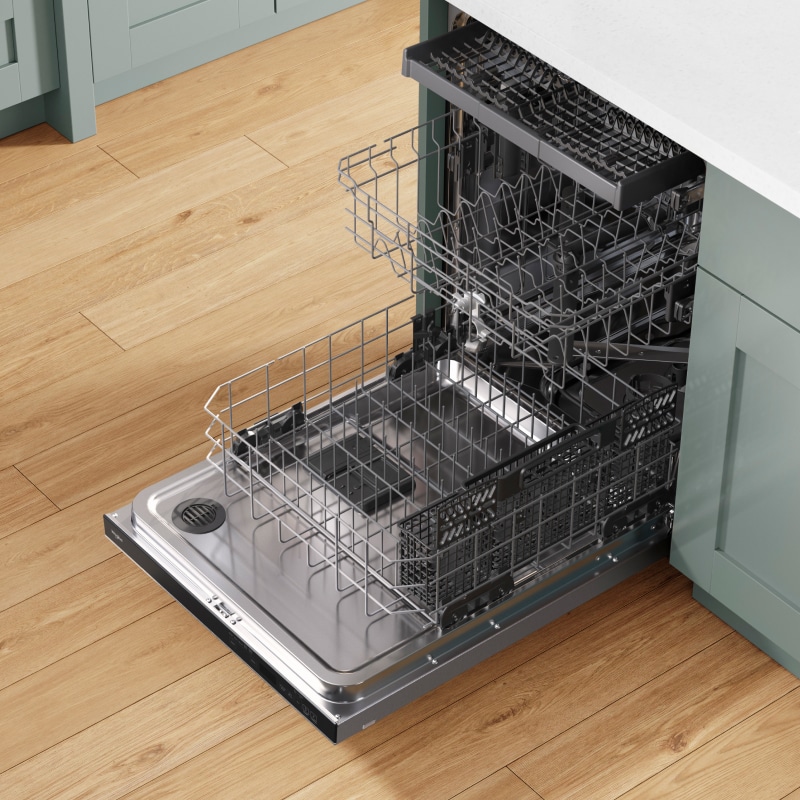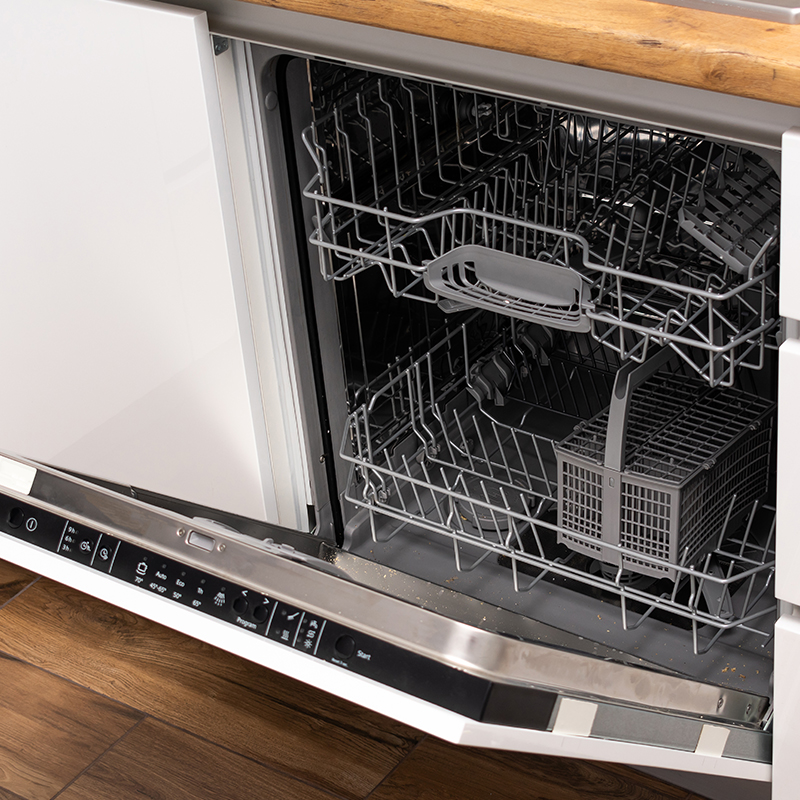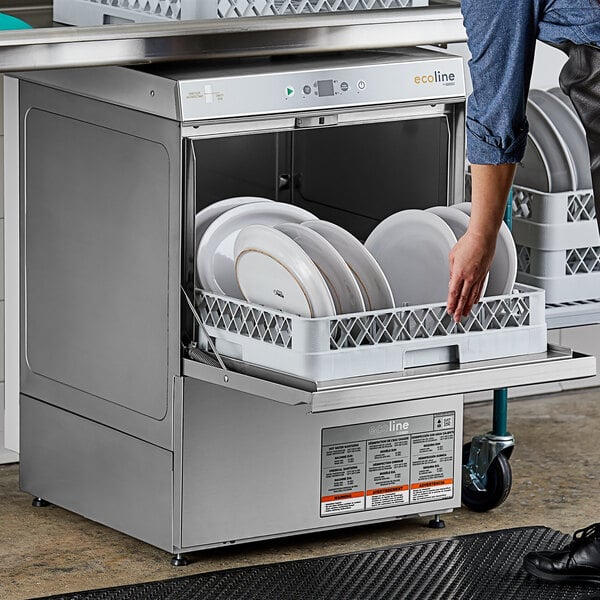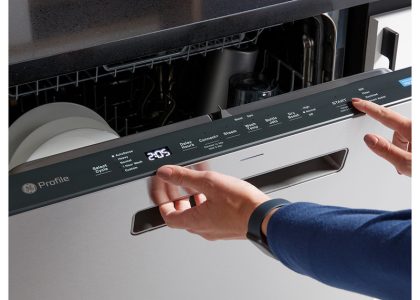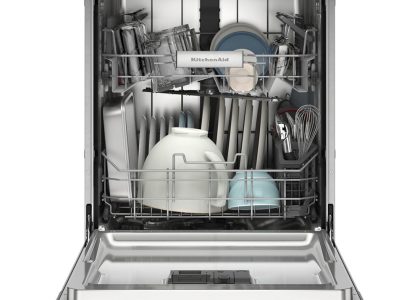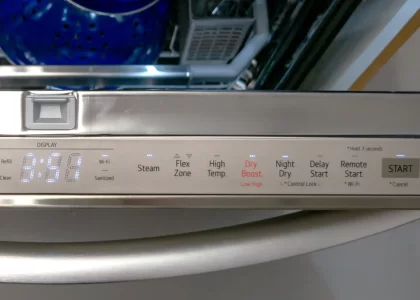Common Causes of Dishwasher Drain Problems
Why is dishwasher not draining? There are several common issues that can cause a dishwasher not to drain properly. Understanding these can help in troubleshooting effectively. Here are some of the most common causes:
- Clogged Drain Hose: Food particles, grease, and other debris can clog the drain hose over time. This blockage can prevent water from draining out of the dishwasher.
- Drain Pump Malfunction: The drain pump forces water out of the dishwasher. If it fails or becomes clogged, the dishwasher won’t drain.
- Faulty Check Valve: The check valve prevents backflow into the dishwasher. If it’s stuck or broken, water won’t drain as it should.
- Garbage Disposal Issues: If your dishwasher is connected to a garbage disposal, a clogged disposal or an improperly installed drain plug can cause drainage problems in the dishwasher.
- Dirty or Clogged Filters: Over time, dishwasher filters can become clogged with food particles and debris—cleaning them regularly is essential.
- Corrupted Control Panel: Sometimes, the dishwasher’s electronic control panel might be the culprit, causing the unit not to send signals to drain properly.
- Kinked Drain Hose: A kinked hose can restrict water flow. Ensure that the hose is not bent or squished behind the dishwasher.
These are just a few reasons why your dishwasher might not be draining as expected. It’s essential to address these issues timely to avoid more serious problems with your dishwasher.
Initial Checks Before Troubleshooting
Before diving into the troubleshooting process for your dishwasher’s drainage issues, there are some initial checks you should perform. These preliminary steps are crucial and can save you time and effort by identifying simple problems that are easy to fix. Let’s walk through these checks one by one.
- Check for Power Issues: Verify your dishwasher is plugged in and the circuit breaker hasn’t tripped.
- Inspect for Obvious Blockages: Look for visible food particles or objects blocking the bottom of the dishwasher.
- Examine the Garbage Disposal: Ensure that your garbage disposal is not clogged, as this can affect your dishwasher.
- Review the Dishwasher’s Settings: Make sure the dishwasher was set on the correct cycle and completed its cycle properly.
- Ensure Door is Latching Correctly: A dishwasher will not drain if the door is not latched properly.
- Listen for Unusual Noises: Keep an ear out for any strange sounds that could indicate a malfunctioning drain pump or motor.
By conducting these simple checks, you can often determine why your dishwasher is not draining and whether the problem is manageable on your own or if professional help might be needed. Always remember to disconnect power before inspecting any components closely to avoid electrical hazards.
Step-by-Step Drain Troubleshooting Process
Once you have completed the initial checks and found that the issue persists, follow these steps for a comprehensive troubleshooting process. This systematic approach can help isolate the problem and potentially fix it without needing to call in a professional.
- Unplug the Dishwasher: Safety first. Always disconnect the dishwasher from the power source before you begin.
- Remove Standing Water: If there’s water at the bottom, use a cup and towels to remove it manually.
- Check the Drain Hose: Ensure it’s not kinked or clogged. Straighten if necessary and flush it out to remove possible obstructions.
- Inspect the Drain Pump: Look for obstructions in the pump. Clear any debris if found. Assess for signs of damage.
- Clean the Filters: Regularly clean the filters. A buildup of food particles can hinder drainage.
- Test the Check Valve: Make sure it moves freely and isn’t stuck. Replace if it shows signs of wear or damage.
- Evaluate the Control Panel: If the dishwasher settings seem off, the control panel might be the issue. Consult the manual for reset instructions or consider professional assistance.
By following these steps, you can often identify why your dishwasher is not draining. Resolve many common dishwasher drainage problems on your own, saving both time and money. Remember, if you encounter complicated issues or are unsure at any point, don’t hesitate to contact a professional for assistance.
Maintenance Tips to Prevent Drain Issues
To stop dishwasher drain problems before they start, follow these maintenance tips. Consistency in these habits can prevent clogs and ensure smooth operation.
- Run Hot Water Before Starting the Dishwasher: This ensures that water enters the machine hot, potentially reducing grease build-up.
- Scrape Dishes Well: Remove food scraps from dishes before placing them in the dishwasher. Less debris means fewer chances for clogs.
- Regularly Clean the Filter: Pull out the dishwasher filter monthly and rinse it thoroughly. This step is crucial to keeping the drain clear.
- Check the Drain Hose: Periodically inspect the hose for kinks or blockages. Keep an eye out during loading to prevent crushing it with heavy pots or pans.
- Use the Right Detergent: Select a detergent appropriate for your model. Too much detergent or the wrong type can lead to residue.
- Run Vinegar Through a Cycle: Once a month, run an empty dishwasher with a cup of vinegar. This will help dissolve any lingering grease or buildup.
- Keep the Garbage Disposal Clear: If connected, make sure your garbage disposal is clear before running the dishwasher.
- Examine Seals and Gaskets: Check the door seals and gaskets. Replace them if you notice wear or damage to prevent water from lingering.
By incorporating these suggestions into your routine, you tackle why your dishwasher is not draining before it evolves into a bigger problem. Simple upkeep keeps the appliance in peak condition and heads off inconvenient repairs.
Understanding Dishwasher Drain Components
To effectively address why your dishwasher is not draining, familiarity with its components is key. Here’s a breakdown of the main parts involved:
- Drain Hose: Carries water from dishwasher to sink drain or garbage disposal.
- Drain Pump: Uses impellers to push water out. If defective, water stays inside.
- Check Valve: Prevents drained water from flowing back into the dishwasher.
- Filters: Trap food debris. Must be clean to allow water flow.
- Air Gap: Prevents dirty sink water from backflowing into the dishwasher (if installed).
- Garbage Disposal Connection: Where the dishwasher hose attaches to disposal. It must be clear.
Understanding each component’s role can guide you when something goes wrong. If the dishwasher isn’t draining, check these parts one by one. Sometimes, the issue is simple, like a food blockage in the filter.
Regular checks and cleaning of these components can prevent many drainage problems. If you’re unsure about any part, consult your dishwasher’s manual for more detailed information. It is important to tackle issues early to avoid more complex repairs later.
When to Call a Professional for Dishwasher Drain Repairs
Knowing why your dishwasher is not draining is the first step. Sometimes, a professional plumber is needed. Here are situations when expert help is best:
- Repeated Blockages: If you often find clogs, even after clearing them, call a professional. Repeated blockages may mean deeper issues.
- Drain Pump Failure: A faulty drain pump could be complex to repair. A technician’s expertise is needed here.
- Water Damage Signs: If there’s evidence of leaking or water damage under the dishwasher, get help. Water damage can lead to mold or structural problems.
- Complex Mechanical Problems: When you suspect the issue lies with intricate parts, such as the motor, a qualified repair person should take a look.
- Old or Recurring Electrical Issues: For anything involving wiring or electrical components, consult an expert to avoid safety hazards.
In each of these scenarios, trying DIY repairs could cause more harm. Rest assured that a seasoned professional will handle the job safely. They can also spot other potential issues to prevent future drain problems. If in doubt, it’s wise to reach out to a professional rather than risk further damage.
DIY Fixes for Simple Drainage Problems
Sometimes, fixing why your dishwasher is not draining doesn’t require a professional. You can often resolve simple issues yourself with a few DIY fixes. Here are some effective solutions to try:
- Clear Clogs with a Wire: Gently use a straightened wire hanger to remove debris clogging the drain hose.
- Vinegar and Baking Soda: Pour a mixture down the dishwasher drain to break up grease and deposits.
- Reset the Dishwasher: Sometimes, all it takes is resetting your dishwasher to clear minor electronic glitches.
- Check the Air Gap: Clean out any debris inside the air gap; it’s often located on the top of the sink.
- Tighten Connections: Make sure the drain hose connections are secure and leak-free.
- Use Boiling Water: Flush the drain with boiling water to help dissolve obstructions.
By addressing these simple points, you can often avoid the inconvenience of a service call. Regularly employing these DIY tips can keep your dishwasher running efficiently and prevent many common drainage problems. For the stubborn issues that remain, always consider the safety and complexity of the problem before deciding whether to proceed or to seek professional help.
Importance of Regular Dishwasher Cleaning and Care
Proper upkeep of your dishwasher is crucial to keep it running smoothly. Regular maintenance can help pinpoint and prevent issues related to drainage. Here’s why regular dishwasher cleaning and care matters:
- Prevents Build-up: Cleaning stops food particles and grease from clogging your dishwasher’s system.
- Ensures Efficiency: Frequent maintenance makes sure your dishwasher operates at peak efficiency.
- Saves Money: By avoiding serious blockages or malfunctions, you dodge costly repairs.
- Extends Appliance Life: Proper care extends the lifespan of your dishwasher, giving you more value for your purchase.
- Promotes Hygiene: Regular cleaning keeps your dishwasher hygienic, ensuring dishes come out clean and safe to use.
The steps to caring for your dishwasher aren’t complicated. Here’s a simple routine to follow:
- Wipe down the interior and edges to remove grime.
- Check and clean the filters, spray arms, and drain area regularly.
- Run a monthly cleaner or use vinegar to clean the internals.
- Keep the seals and gaskets in good shape to prevent leaks.
Consistent care answers the question of why your dishwasher is not draining by catching small problems before they grow. Don’t wait for issues to pop up before you decide to clean. Make it a regular part of your home maintenance. By doing so, you’ll ensure your dishwasher remains a reliable helper in your kitchen for years to come.

